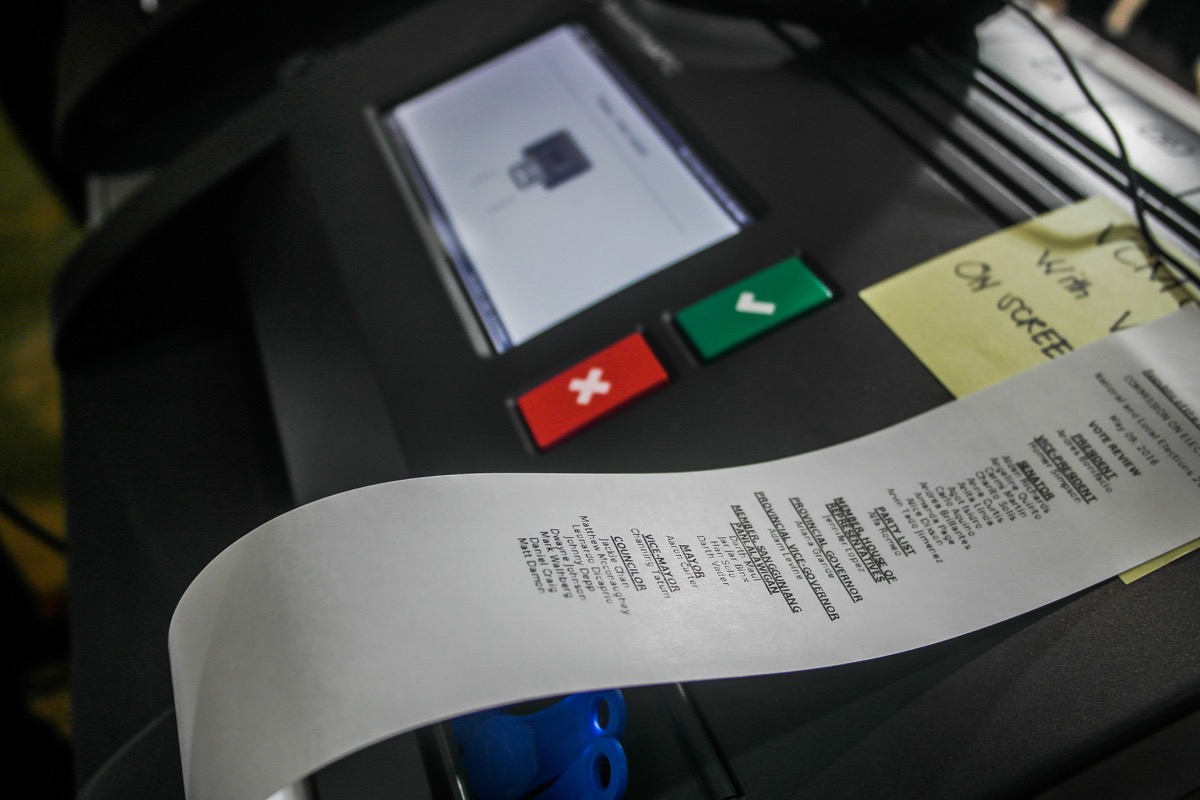By MARIA FEONA IMPERIAL
BARELY a hundred days before this year’s polls, the Commission on Elections has yet to settle issues of vote counting machines (VCMs) being prone to electoral fraud, poll watchdogs say.
To boost public confidence, the Comelec demonstrated Monday four security features in its VCMs. These were not used in the Precinct Count Optical Scan (PCOS) machines in the 2010 and 2013 elections.

The poll body will activate three of the four security features for the May elections: the source code review, ultraviolet lamps and three digital signatures of Board of Election Inspectors (BEI). Ultraviolet lamps weren’t used in the 2010 elections.
The fourth feature, the Voter Verified Paper Audit Trail (VVPAT), however, still remains a subject of debate. The key element of the VVPAT is the vote receipt printed by the VCM, which serves as a means to detect fraud and audit stored electronic results.
The receipt-printing feature has not been activated since the 2010 elections.
Monday’s demonstration was meant to debunk misconceptions that the features weren’t there, Comelec spokesperson James Jimenez said.
But critics say these transparency efforts, particularly the printing of receipts, may be used as a scheme for vote-buying and vote-selling.
Comelec Chairman Andres Bautista said the VVPAT has both its pros and cons.
While it promotes transparency and accuracy, it lacks protection from vote buying, he said.
During the roadshow of VCMs to members of the media, university students and civil society groups, Jimenez acknowledged that the receipt, when released by the machine, are exposed enough to be seen not only by the voter and the BEI.
“The Comelec says (it) can provide ballot boxes for the tickets, but we know that on election day, there are procedures that are not usually followed,” said lawyer Rona Ann Caritos, executive director of the Legal Network for Truthful Elections (LENTE).
“And these (procedures) may not be followed and may be used as evidence for vote buying and selling,” she added.
In addition, activation of the receipt-printing feature of the VVPAT would mean longer voting hours, Jimenez said.
If the VVPAT feature is enabled, it will entail an additional seven hours for every 600 voters in each precinct, he said.
The receipt, or the tape, takes 13 seconds to print. A voter, however, may require more time to read the tape. Some may only glance at the tape and toss it in the ballot box, but others can just easily take their time reviewing or counterchecking the tape for about 30 seconds.

In addition, Bautista acknowledged how the VVPAT, despite its true intentions, has a way of disrupting the elections.
“The intent of the voter might not coincide with how the machine counts because of the level of shading,” he said.
In the past, the VCMs have had a history of not accepting ballots even though they are not tampered with, Caritos said.
“May mga pagkakataon na ‘yung makina, hindi tinatanggap yung balota. Wala namang dahilan; hindi naman sira, hindi naman punit, wala namang dumi eh hindi lang tinatanggap ng makina (There were times when the machines did not accept the ballots even for no reason. They were not dysfunctional, the ballots were not torn or tampered with),” Caritos said.
In instances like these in the 2010 and 2013 polls, voters were not given extra ballots resulting to disenfranchisement, she said.
Under Section 13 of Republic Act 9369, the official ballots should be printed and distributed to each city or municipality at the rate of one ballot per registered voter with a provision of additional three ballots per precinct.
However, for the 2016 polls, LENTE has appealed to Comelec to provide additional ballots in case of unforeseen circumstances.
Another disadvantage of the VVPAT is the possibility of conspiracy among candidates in questioning the credibility of the elections by organizing a group that will complain about the inaccuracy of the receipts, Bautista.
Whether or not the VVPAT would be enabled is to be decided by the poll body sometime this month.
In the meantime, Comelec said it is consulting with stakeholders and accepting position papers on issues relating to the security of VCMs.
The possibility of prohibiting cellular phones inside precincts will also be deliberated on to avoid vote-buying and preserve the sanctity of the ballot.
But Caritos said Comelec should already be focusing on implementation.
“Up to this day, we’re still talking about what can be done,” she said.
Caritos said the general instructions (GI) for the 2016 polls, which includes procedures on voting, counting and transmission, is long overdue.
Of the 97,000 rented VCMs to be used in the coming elections, 67,000 are already in the country, Jimenez said. The machines used in the previous elections are stored in a warehouse and are undergoing preventive maintenance for the 2019 elections.
The remaining 30,000 units of VCMs are expected to come in by February, Jimenez said.





